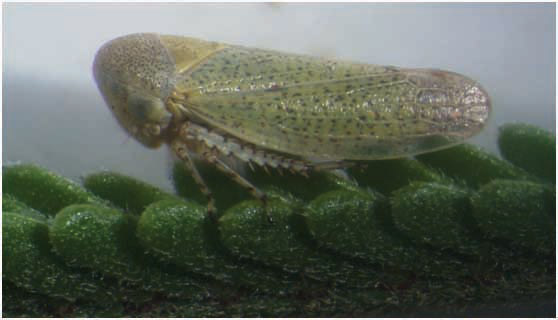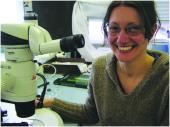macropsines
This project will help increase understanding of the taxonomy and systematics of a subfamily of leafhoppers in Australia, known as Macropsinae (Hemiptera: Cicadellidae). The study aims to clarify which genera are represented amongst the Australian fauna and investigate whether any Australian species belong to the genera Macropsis and/ or Oncopsis. These two genera contain plant disease vector species overseas. This project will also investigate the relationships between Australian macropsines and those pest groups from overseas. Through a sound understanding of the taxonomy and systematics of the existing Australian macropsine fauna, this study will contribute to Australia’s biosecurity and improve diagnostic capability to identify potential incursions of emergency plant pests.
What is the biosecurity problem?
Leafhoppers are phytophagous insects which can cause plant damage through feeding but are also vectors of serious plant diseases in agricultural and horticultural crops. Leafhoppers are considered major pests of economic significance. For this reason some groups of leafhoppers are well studied both taxonomically and biologically. However, some groups of leafhoppers, such as macropsines, have been overlooked and have received little taxonomic attention, particularly in Australia. In part, this neglect may be due to the taxonomic complexity of this group.
At least four macropsine species are known to transmit plant diseases overseas. This includes species of Macropsis which transmit a phytoplasma known as rubus stunt, (affecting blackberries, raspberries and other berry crops) in Europe. At least one further Macropsis species is known to be a vector of peach yellows phytoplasma which affects Prunus crops (peach, nectarine, almonds and apricots) in the USA. However, there are no records that these diseases or their vectors occur in Australia.
A recent study also found that one species of Oncopsis is capable of transmitting a phytoplasma (related to grapevine yellows) from alder trees to grapevines.
The above study stimulated interest in the taxonomy of the Australian macropsine fauna. Of particular interest, is the relationship between Australian macropsine species and those of the plant disease vector species from overseas.
Along with increased international trade, new leafhopper pests and plant pathogens may be introduced to Australia. It is important to have a basic taxonomic understanding of the Australian macropsine fauna to more readily distinguish any introduced exotic species.
The main outputs of this project are to:
-
improve understanding of the taxonomy and systematics of the Australian macropsine leafhoppers. This research will clarify which macropsine genera occur in Australia and provide easier identification with dichotomous keys, images and descriptions to be published in relevant scientific journals
-
provide insight into the relationship between Australian and overseas macropsine genera, particularly those with plant disease vectors such as Macropsis and Oncopsis
-
generate new DNA sequence data for those macropsine species tested. This data will be made available on Genbank and primers and techniques used for testing to be published
-
assist with expediting issues surrounding market access, (particularly the berry and stone fruit industry) by providing a more complete catalogue of leafhopper genera and species currently present in Australia, and
-
improve diagnostic capability through keys, descriptions and illustrations this study will allow easier diagnosis (using both morphological and molecular techniques) of macropsine species/ specimens intercepted by diagnosticians, scientific researchers or by growers.
Who will be the end-users of this research?
The end-users include Plant Health Australia, the Department of Agriculture, Fisheries and Forestry (including the Australian Quarantine and Inspection Service), state government departments, such as primary industries as well as state regulatory bodies. Keys and diagnostic descriptions will also be useful for identification of leafhoppers by diagnosticians, museum staff or those working in insect reference collections and other entomological researchers such as those involved with biological surveys.

Linda Semeraro collecting insects with sweep net,
DPI Knoxfield. Photo taken by: Isabel Valenzuela

Macropsine species (undetermined)
– belongs to possible new genus –
collected by sweeping Acacia mearnsii
DPI Knoxfield, Victoria. Photo taken by: Linda Semeraro.
STUDENT

Linda Semeraro
Student CRC60138: Systematics of Australian Macropsine Leafhoppers - PhD
Linda.Semeraro@dpi.vic.gov.au
Phone: (03) 9210 9329
Read More
PROJECT DETAILS
Active
Supervisor
Professor Tim New, Dr Fiona Bird (LaTrobe University), Dr Murray Fletcher, Dr Andrew Mitchell (NSWDPI) and Dr Mali Malipatil (DPI Victoria)
Supervising Institution
LaTrobe University
Term
March 2009 – April 2010

